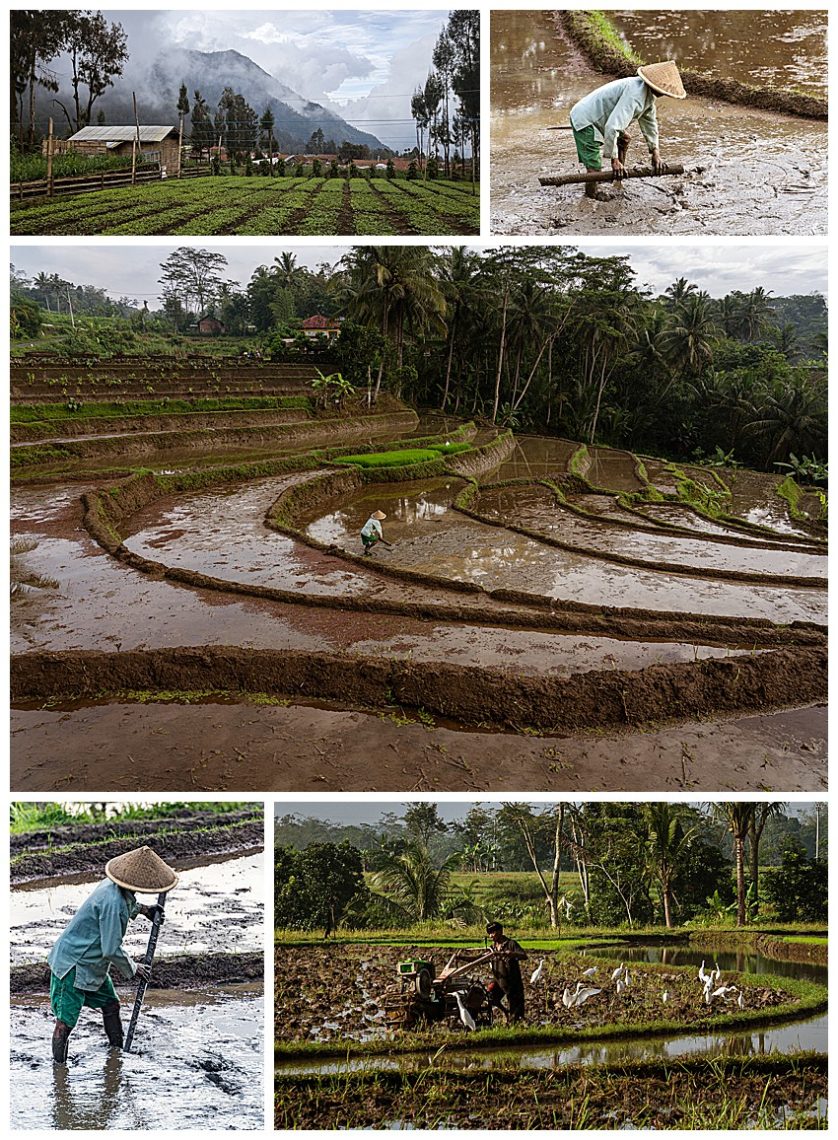
Terraced rice fields and paddies around Yogyakarta in rural parts of Java. East Java is the biggest rice producing province within Indonesia. Indonesia is ranked third among the biggest rice producers in the world, and is also among the largest rice consumers in the world. Indonesia continues to experiment to increase yields, including increasing the use of mechanical equipment.
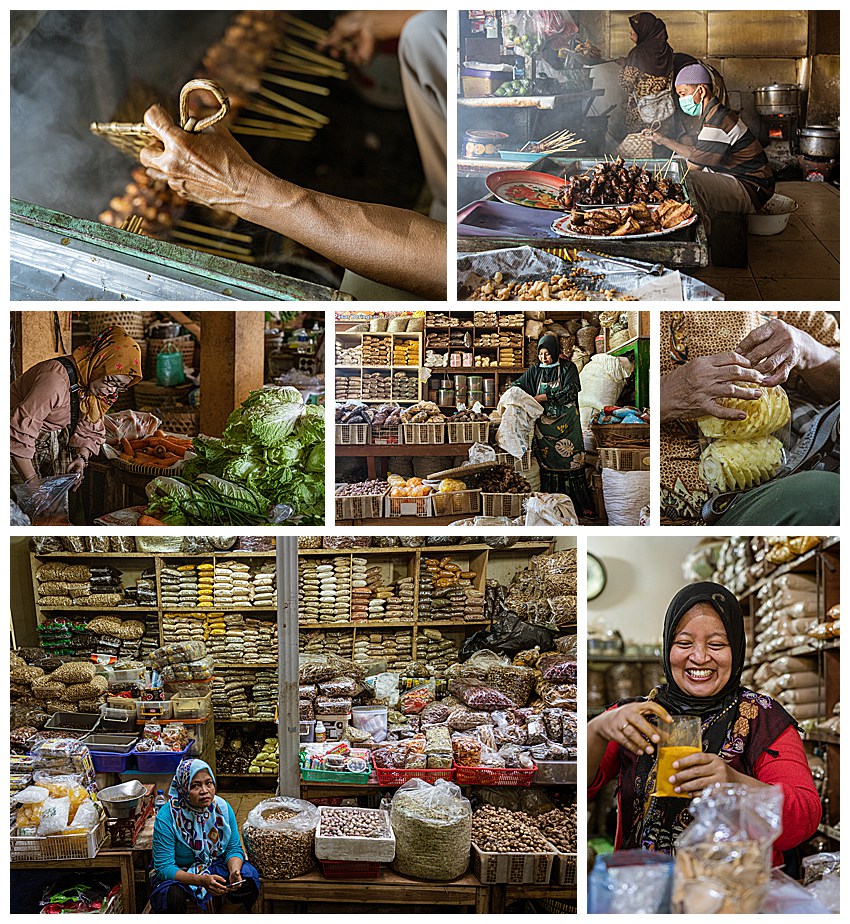
Pasar Beringharjo Yogyakarta is a bustling iconic traditional indoor street market. It is the oldest market in the Kraton area and has been continuously operating since 1758. The vendors here are welcoming, and you can buy almost anything here, including a large variety of spices, fresh fruits and vegetables, inexpensive souvenirs, batik, clothing, fast food, jamu, antiques, and anything else Yogya in this three-level market.
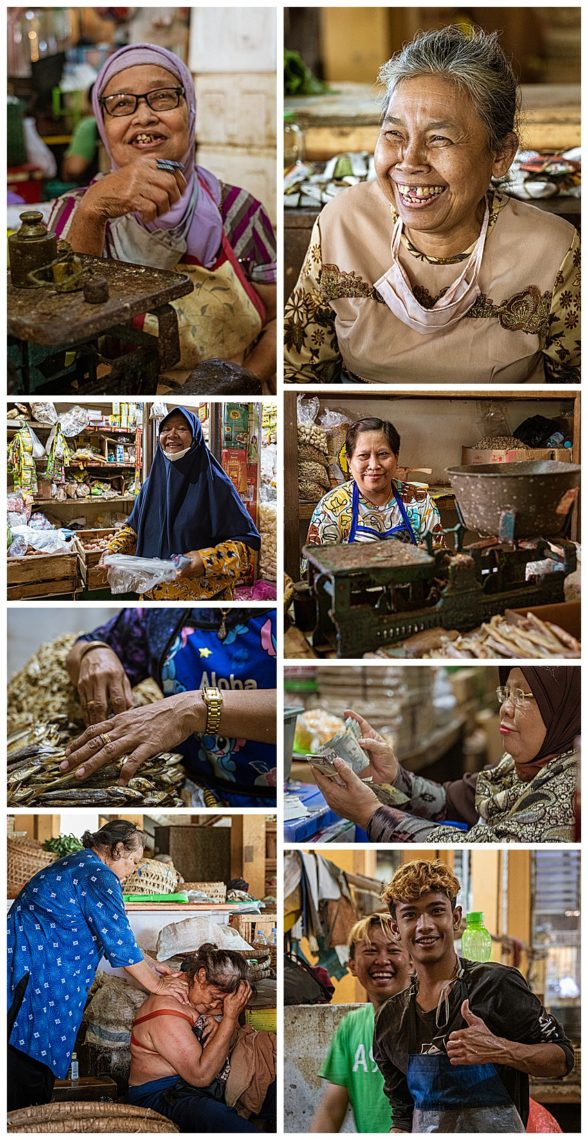
One of the services offered at this traditional market is massage (lower-left). People are always willing to have their photo taken, and their wide smiles often demonstrate the poor dental care in this country (upper-right).
Above is a short 75 second clip to give a feel of what the life of a vendor is in this market.
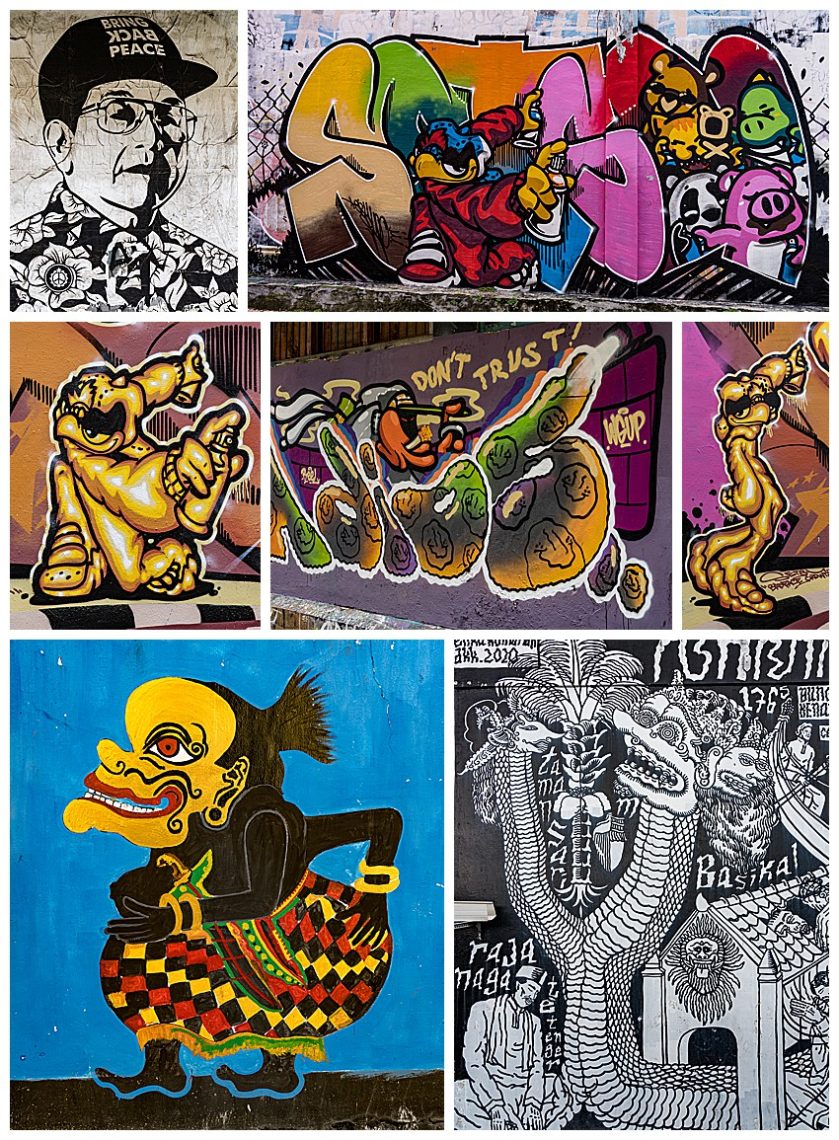
Wandering around town, we frequently found street art of varying quality. Though this city will likely never be known as a street art mecca, it is still enjoyable to come across the unexpected piece of graphics.
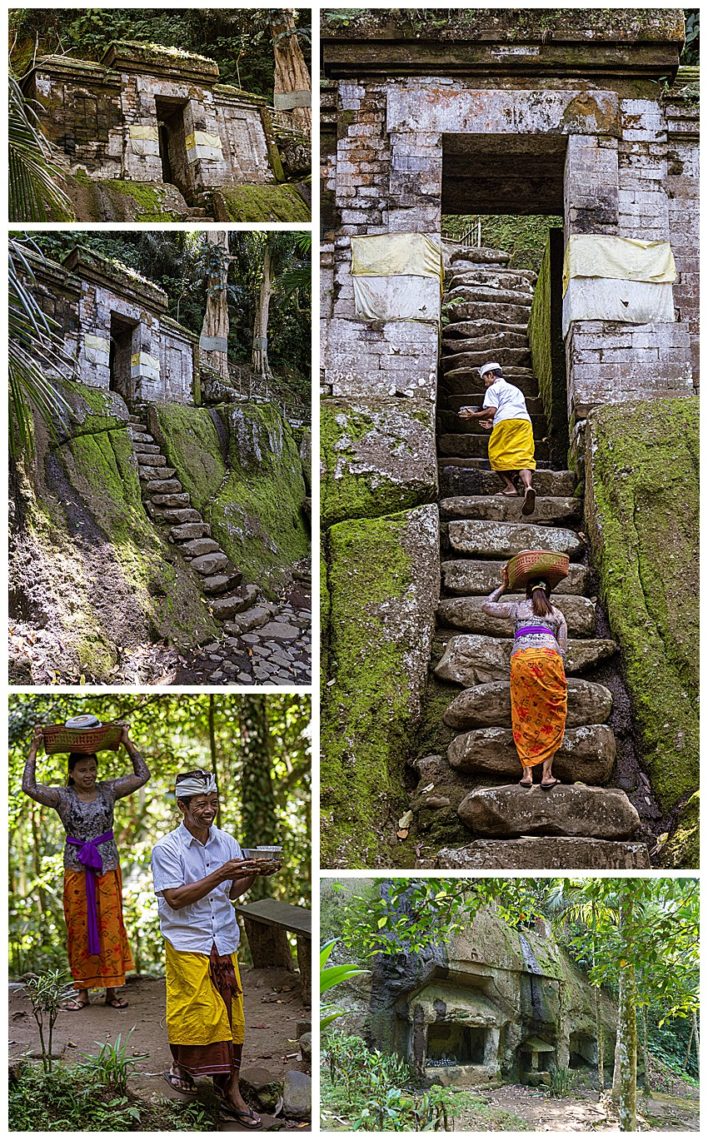
Temples are everywhere throughout Indonesia. One day we explored a long line of stone steps that seemed to go on forever. At the bottom, we discovered a stone age temple carved out of an ancient cave. As we were wondering about this “forgotten temple” at the bottom of the steps, a priest walked up from even further down, with offerings to present at this temple. Though much of the world may have forgotten this temple, this couple made the trip three times per day to make offerings to their Gods.
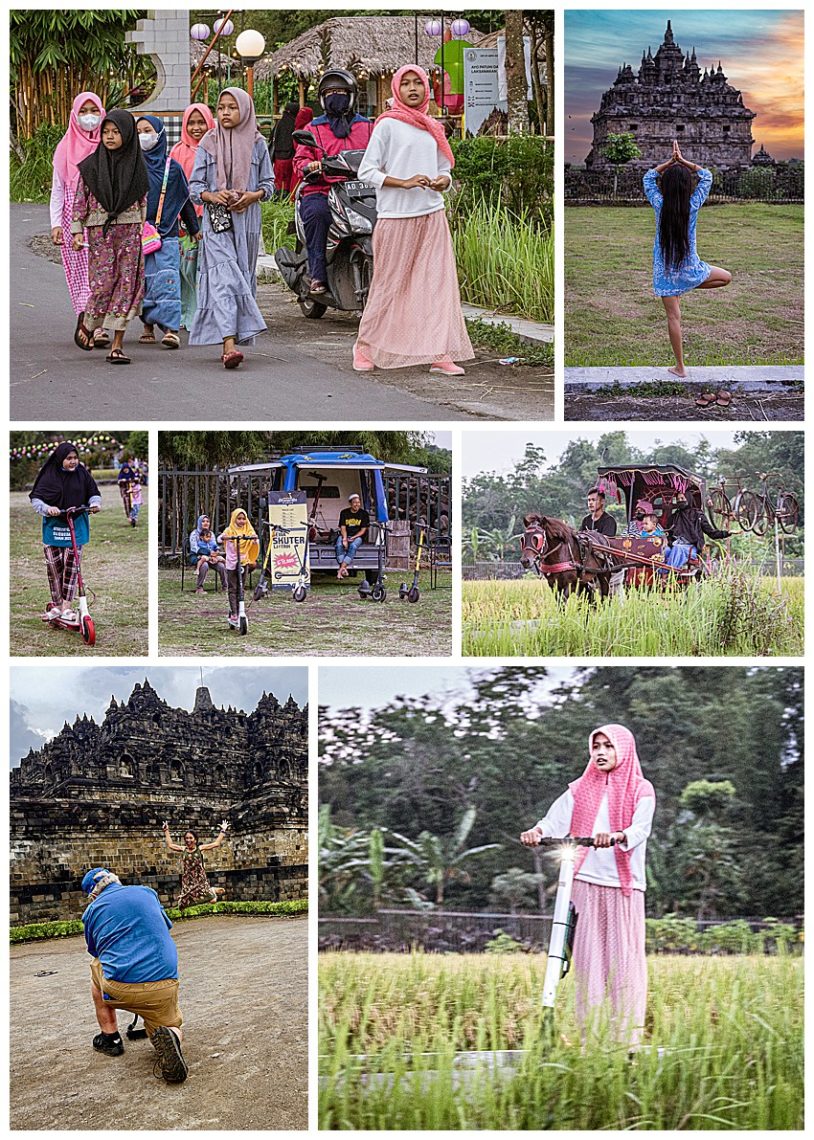
We had intended to visit the Prambanan Temple for some sunset photography. When we arrived though, we discovered that it had closed early. We drove around the neighborhood, only to find another temple ruin where the fences were close enough to allow us to capture some interesting images. Vina gave us a yoga pose in front of the temple at sunset (upper-right), so we got the image we had in mind.
Following the fence around the temple ruin, to see what other angles of photographs might present themselves, we were in for a surprise. Some enterprising vendors had turned a next-door vacant lot into a small amusement park. One vendor rented out electric scooters (center) for $1 USD for 15 minutes, and kids were having a ball on them (left-center and lower-right). Another vendor was giving horse buggy rides around the temple (center-right).
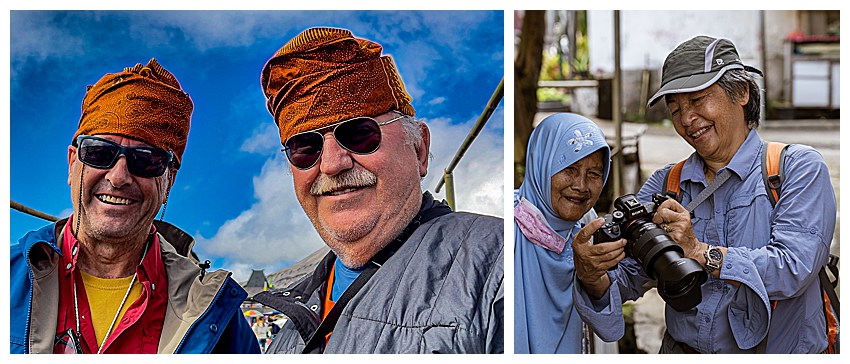
In order to be allowed to enter one of the Java Tengger festivals, all men were required to wear an “udeng.” It is simply a square cloth that is intricately tied to form a Hindu head covering, and is obligatory when taking part in a religious ceremony. Our guide brought along the necessary cloth and tied an appropriate head dress for David and Burt (left).
Above right, Evelyn is showing the 94 year old Javanese woman in old Yogyakarta her photo. She told us her life story that includes having 30 grandchildren and great grandchildren.
